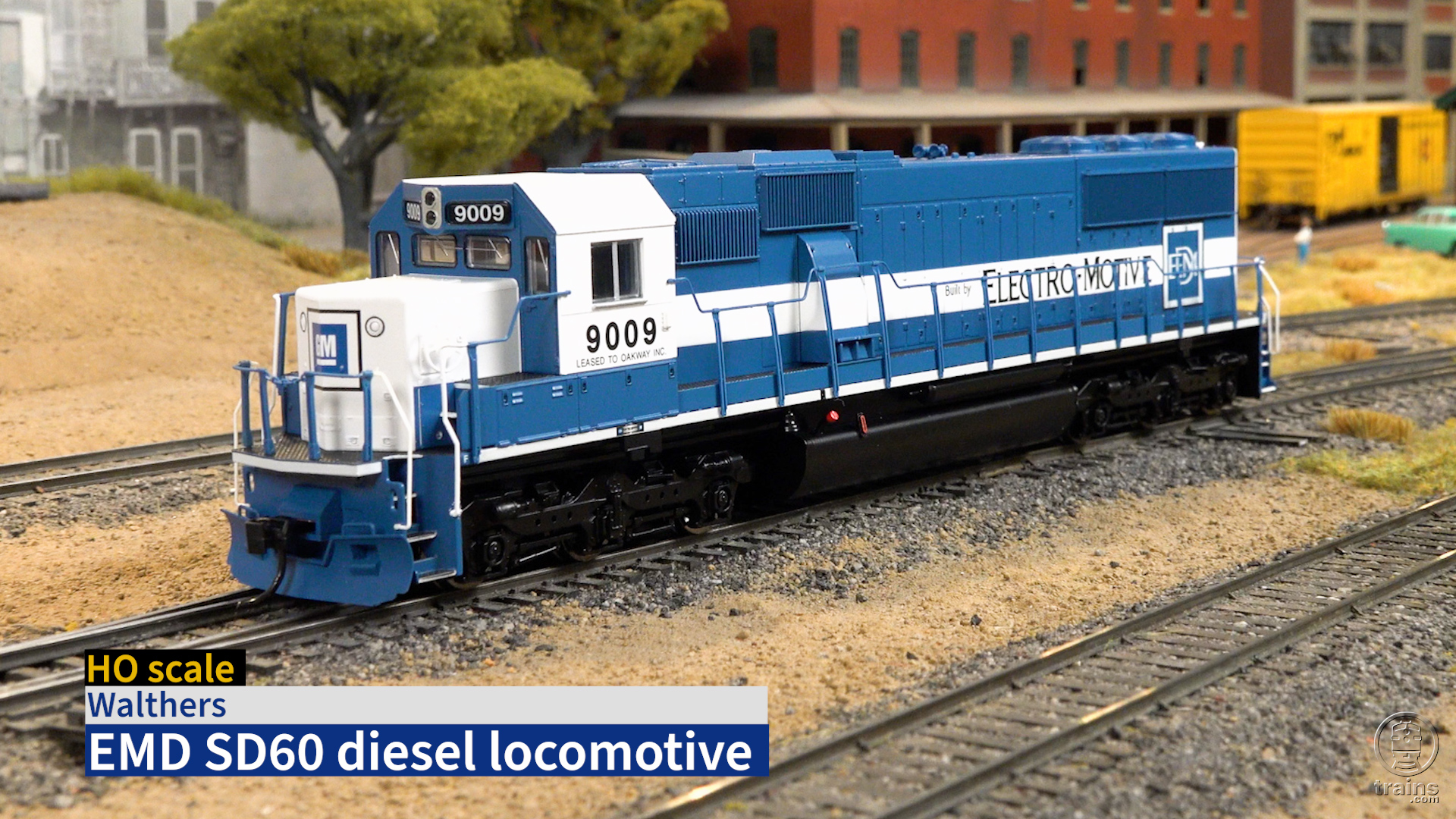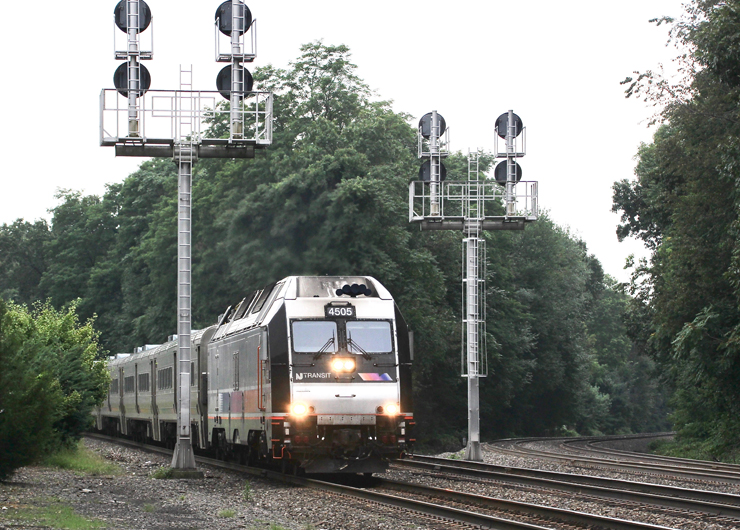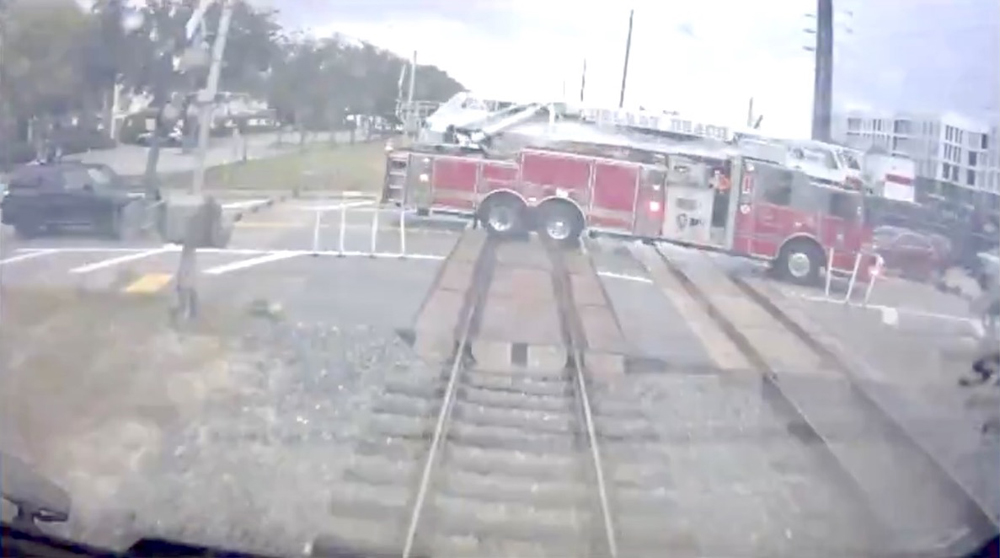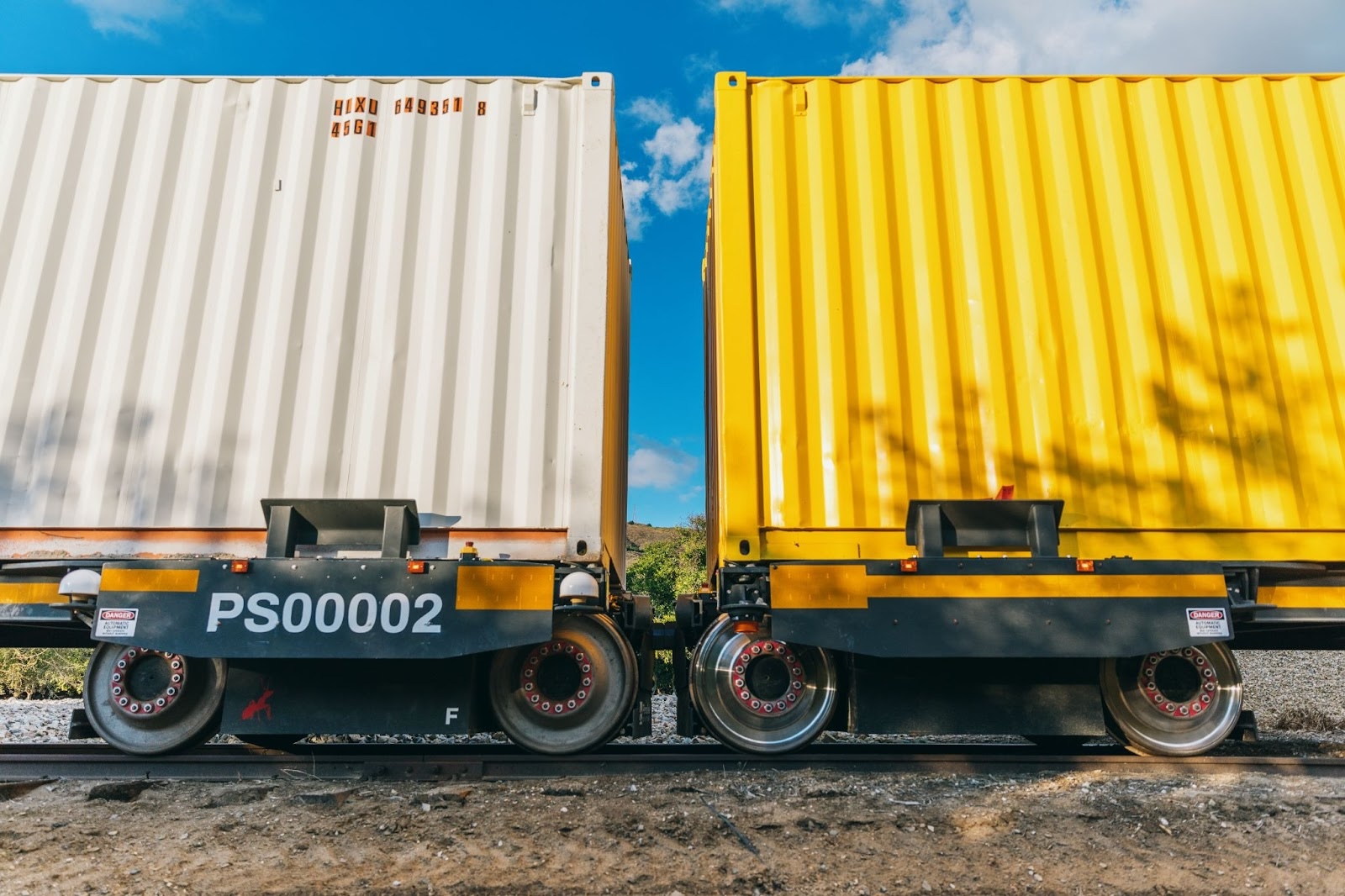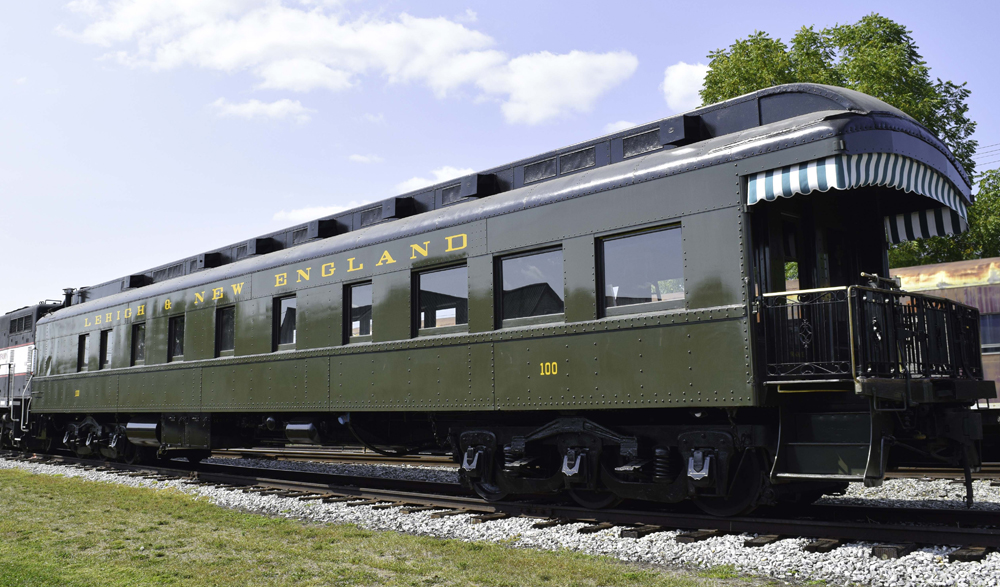
DUNCANSVILLE, Pa. — After a 10-month restoration, former Lehigh & New England office car No. 100 is ready to start carrying first-class passengers for its new owner, the Everett Railroad.
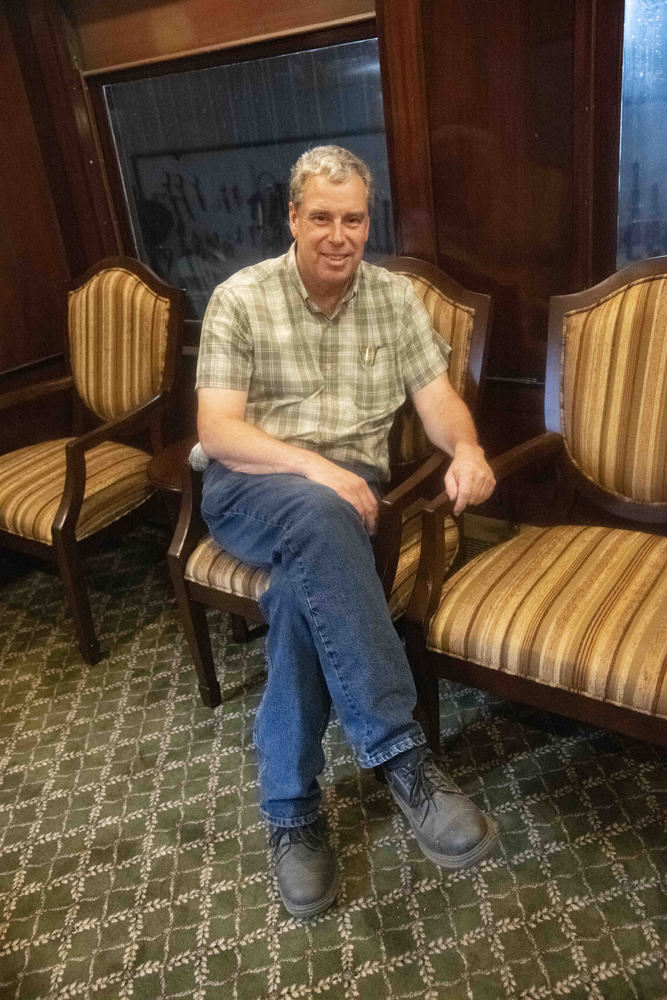
After L&NE quit running in 1961, the car served as a restaurant annex near Philadelphia before trolley broker Ed Metka of Windber, Pa., bought it in 1993. He stored it indoors in a former freight-car repair shop, but left it untouched from its days as an eating house, including two gaping doors torched into one side to provide patrons and waitstaff access to the main restaurant building.
It was a fortunate case of second chances. More than a decade ago, Everett President Alan Maples was adding excursion passenger trains to his short-line freight business. He took a look at the car then and came away empty-handed. “I needed coaches,” he said, “and it was a hacked-up office car.”
Fast forward to 2023. With a now-flourishing tourist business and needing a premium-class car to augment coach seating, Maples last year — out of the blue — remembered the L&NE 100. Through a friend, Keith Burkey, he recontacted Metka and made an appointment for another look.
He found that the car had been heavily vandalized since his prior visit. “But I figured it was now or never,” he said. “I took a check and bought it on the spot.“ [See “Last known Lehigh & New England passenger car . . .,” Trains News Wire, May 8, 2023.]
Despite the damage, and aside from the two doors, it was structurally sound. “Thank God it was stored inside for 30 years,” Maples said.
Mahogany paneling
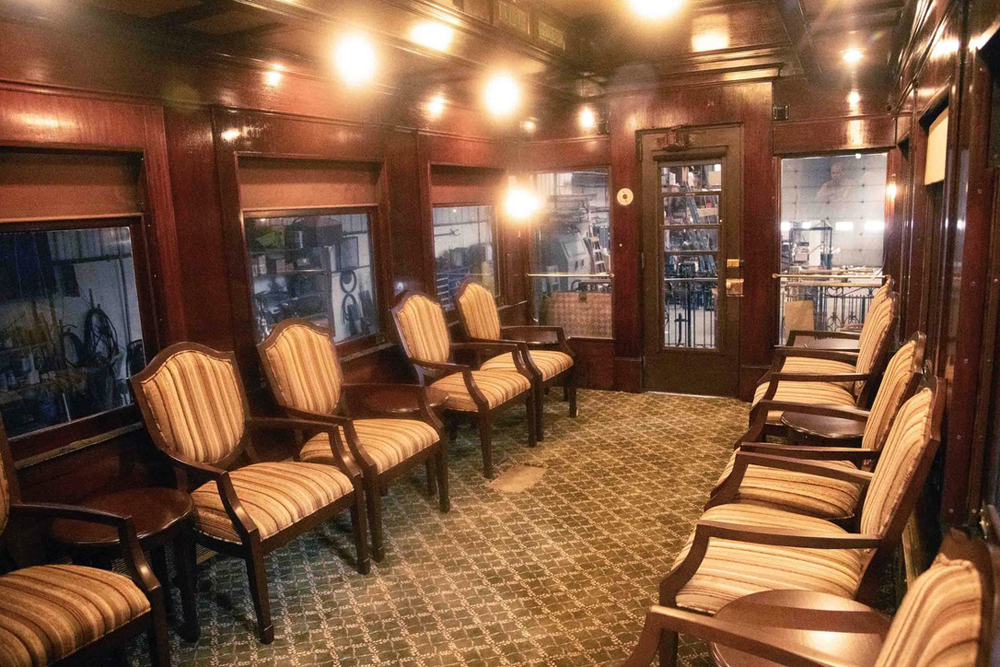
Since then, he and his staff have worked to close the holes; renew or replace the mechanical, electrical, and plumbing systems; and completely refurbish the interior. That meant restoring surviving mahogany veneer paneling and replacing it elsewhere where it had been removed.
The car originally included several compartments, each with upper and lower berths like those of a heavyweight Pullman sleeper. In restoration, that area has been repurposed with tables. The rearward parlor section remains as built, completed with analog speed recorder gauge. Original stained-glass panels in the clerestory roof were retained.
Returning the interior to its exact as-built configuration wasn’t possible, Maples said, because it had been so heavily modified and because no floor-plan blueprints have surfaced. “We’re not a museum, but we want to honor its heritage wherever we can,” Maples said.
With its original exterior appearance of Pullman green with gold L&NE lettering, the 75-foot-long, 60-ton steel car is the only known example of passenger rolling-stock from that anthracite-region line. It was built by American Car & Foundry Co.’s former Jackson & Sharp works in Wilmington, Del., in September 1925. Although it’s a steel car, Maples noted that “it reflects wood-car methods because Jackson & Sharp was primarily a wooden passenger-car builder.”
He cited the work of his staff on the project: Jonathan Chwatek, woodworking; shop foreman Mike Fink, painting; Danielle Kelly, interior painting and general labor; former general manager Jason Lamb, loading and moving; Michelle Moyer, advising on furnishings and marketing; Neil Myers, fabricating and pipefitting; and Jim Patterson, electrician.
A sign painter, Terry Imler, applied the lettering, including the word “Private” just inches above the door sill on the observation end, a task that required him to work while lying on his belly.
Strates Shows Car No. 21
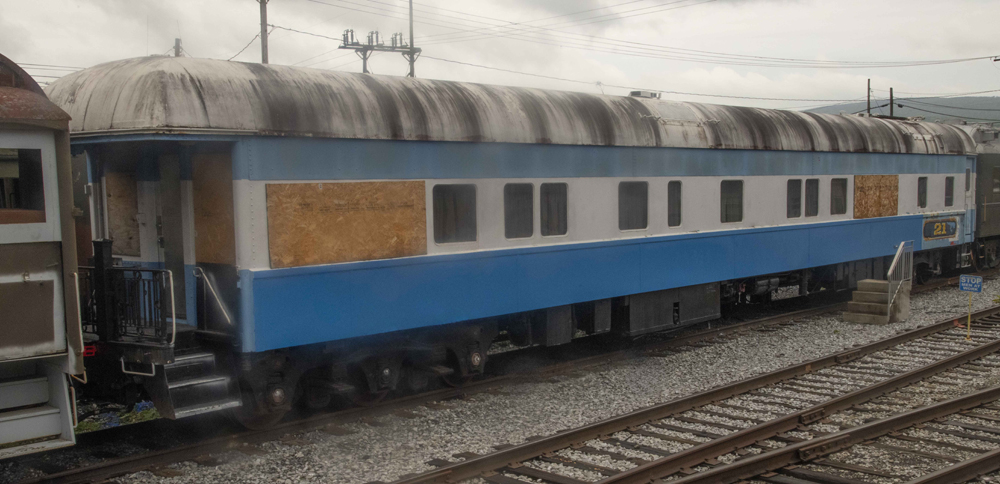
Now that one project is done, another is in the works. As the James E. Strates Shows carnival train was closing out its final runs [See “James E. Strates Shows carnival train makes a …,” Trains News Wire, Aug. 2, 2024.], Maples was making arrangements to buy the former personal car used by the carnival owner and his family. Car No. 21, a former Chesapeake & Ohio heavyweight office car that started life in the same role for the Nickel Plate Road, traveled with the show for many years.
When Strates, a Greek immigrant who founded the company in 1923, died in 1959, his son E. James Strates succeeded him. The son acquired the 1925 Pullman-built car from C&O and became, Maples said, “the last show owner to travel by train, and this was the last of the showman’s cars . . . The Strates family’s private car No. 21 was always kept spotless and was clearly the pride of the fleet.”
Carrying the parents and five kids, the car contained five bedrooms, a kitchen, dining room, and observation room.
Growing up in Bethesda, Md., Maples remembers the Strates cars parked on sidings at nearby Gaithersburg while the show played at the Montgomery County Fairgrounds. At that time, the Orlando, Fla.-based train traveled as far north as New England, its complement of eight or nine passenger cars carrying a staff of about 100 people, who lived aboard the train. Some 40 to 45 flat cars carried midway rides, concessions, and vehicles.
About 10 years ago, Strates ended the passenger-car part of the operation but continued to move equipment by rail. That ended with the COVID-19 pandemic of 2020, with its restrictions on mass gatherings. When carnivals did reopen, they were smaller, tightening the economics of moving a show by rail to the point that the Strates family gave up railroad movements.
Maples, who bought the car from the show founder’s grandson, John Strates, intends to restore the car as a rolling tribute to the traveling circus-train and carnival-train era, with corresponding photos and displays. “If a railroad museum got this car, they‘d turn it back to what it was originally,” he said. He cites the film “Carnival Train” as a documentary of the field.
With 22 miles of ex-Pennsylvania Railroad branch lines, the Everett Railroad runs diesel-hauled freight trains and seasonal diesel- and steam-powered passenger trains.






